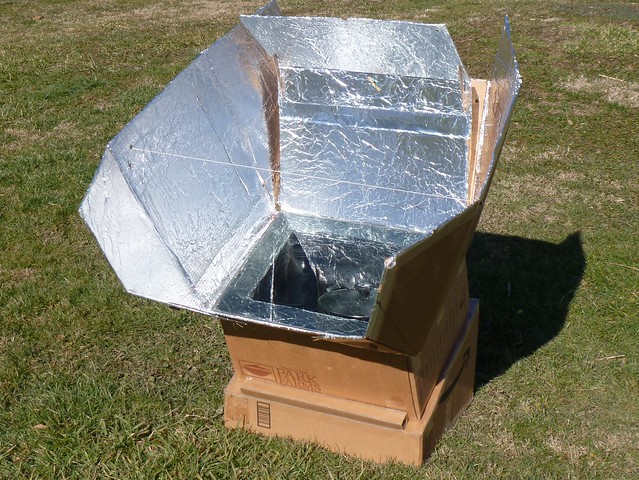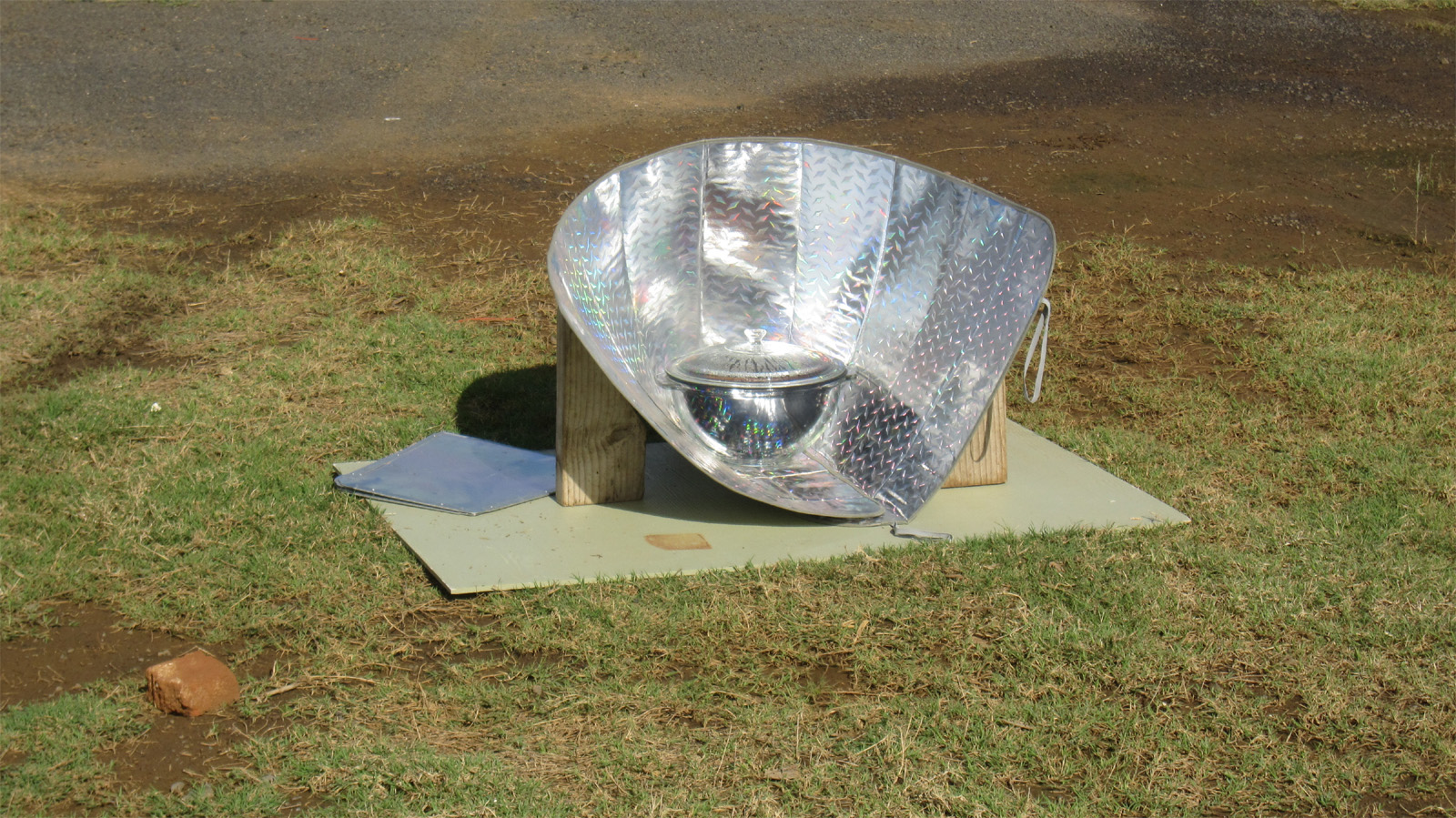When temperatures start to rise, the light gray smoke from outdoor grills can be seen dotting the horizon. It’s well established that Americans love cooking outside their homes.
Will that passion – plus an encouraging angle for environmentally-friendly living – keep a new generation of Americans cooking outside?
It’s possible, thanks to advances to and a new demand for solar cookers.
Solar cookers come in a variety of shapes and models, yet their essence is the same: harnessing the direct sunlight to power your cooking contraption. Ranging from $50-60 for a small unit to $400 for a hybrid model, solar cookers are an attractive option for individuals looking to reduce their energy consumption.

A homemade solar oven (pictured above). You can find numerous self-help videos on making one of these DIY.
In addition to reduced pricing, several benefits exist for solar cookers. These devices can reach temperatures as high as 400-degrees Fahrenheit, giving owners the convenience of traditional ovens. Unlike gas-burning stoves, there is no fire or danger of fire breaking out in your home.
These are also portable, meaning you can pack up your stove and move it to whenever you might need the ability to cook. Moreover, most units can function either as fast- or slow-cookers, meaning you have an option to leave food cooking all-day much like a crock-pot. By using a renewable energy source (sunlight), it’s a free method of cooking.
Their limitations could be deal-breakers for some consumers. Most units are smaller than a tradition oven, meaning larger families could need multiple units to cook a meal. Further, direct sunlight is necessary, which limits everyday use in some regions. Being outside would also be a problem in colder climates where residents could trade energy efficiency for the climate-controlled convenience inside their dwelling.
With renewable energy applications in demand, it’s hard to determine if this is a fad or the future. For now, an argument can be made for both.
Either way, multiple companies – including GoSun, Sun Oven, and Solavore – have emerged to meet consumer demand. Unlike the domestic market, the international marketplace already has embraced this technology, especially in countries where access to utilities is scarce and sunlight is plentiful.

